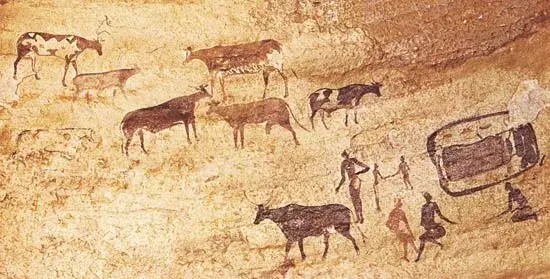Atlantika Museum
ATLANTIKA
Architecture
Artifact
Atmospheres
Digital Museum
What is Atlantika ?
Atlantika is an open-source digital library that collects cultural digital twin objects from all time periods and regions across the globe — from fossils to contemporary artifacts. Each 3D-scanned object will be accompanied by its story, territorial context, and associated narratives, always respecting its origin and cultural significance.
To establish a global organization dedicated to the preservation, scanning, and dissemination of cultural and historical objects by building a freely accessible digital twin of the world.
Atlantika seeks to regenerate ancestral connections, honor cultural and territorial diversity, and promote education through technology.
Democratize access to historical and cultural knowledge.
-
Digitally preserve objects of importance to humanity.
-
Promote immersive tools for primary and secondary education.
-
Provide free digital resources to schools, museums, and communities.
-
Incorporate land acknowledgment practices into each object's representation.
Atlantika Libraries
Open Source Digital Twins




Haniwa, a type of terracotta clay figure crafted during the Kofun period (c. 250-538 CE) in Japan. These figures were created as funerary objects, placed in and around the tombs (kofun) of the elite. The term "haniwa" translates to "circle of clay," referencing their arrangement around the burial mounds.
Key aspects of Haniwa history and purpose:
-
Function:
Haniwa served multiple purposes, including marking the boundaries of tombs, protecting the deceased from evil spirits, and possibly representing the possessions or attendants needed in the afterlife. Some theories suggest they were substitutes for human sacrifices.
-
Forms:
Early Haniwa were simple, cylindrical shapes, but they evolved to include detailed representations of people, animals, and buildings. Human-shaped Haniwa depict various social classes, such as warriors, priestesses, nobles, farmers, and musicians, providing insights into the life and society of the Kofun period. Animal Haniwa often feature horses, birds, boars, and dogs, with horses being the most common.
-
Construction:
Haniwa were made from water-based clay, shaped, and dried. The protruding parts were made separately and then attached, with details carved in and smoothed with a wooden paddle. They were placed on terraces with cylindrical bases inserted into the ground for stability.
-
Evolution:
Over time, Haniwa designs became more elaborate, reflecting changes in funerary practices and possibly the rise of the Yamato state. By the late Kofun period, the construction of large kofun and the use of Haniwa declined, possibly due to the influence of Buddhism.
-
Significance:
Haniwa are crucial for understanding the Kofun period's social hierarchy, cultural practices, and artistic skills. Detailed Haniwa figures, especially those depicting warriors and horses, offer valuable information about the military and equestrian equipment of the time.

Haniwa
Digital Twin Highlight Artifact March
Atlantika's Team
At Atlantika, we are a multidisciplinary team of designers, researchers, historians, and educators driven by a shared mission: to preserve and democratize access to cultural heritage through open-source technologies. Our team brings together diverse backgrounds and global experiences to build a platform that respects, represents, and reconnects the world with its material past.
We value collaboration, inclusivity, and curiosity. Our work philosophy is rooted in respect for cultural origin, transparency in knowledge sharing, and a deep commitment to educational access. From scanning ancient relics to co-creating narratives with local communities, each member of our team contributes to shaping a more connected and conscious future.
Together, we are building a digital twin of the world — one object, one story at a time.
Kevin Johnson
Architecture Expert
Architect & Researcher
Harvard University GSD MDes
University of Development
(123)456-789
Florencia Kappes
Financial
Chief Finance Officer (CFO)
University of Development
(123)456-789
Ralph Cofffman
RockArt.org
Artifact Expert
Primary Founder of Atlantica Collection
Formaly rockart.org (Not Active)
(123)456-789
Our
Partnets
At Atlantika, we are proud to collaborate with a diverse network of institutions, organizations, and initiatives that share our commitment to cultural preservation, open knowledge, and educational access.
These partnerships strengthen our ability to document, digitize, and share cultural heritage on a global scale — and they reflect the interdisciplinary nature of our mission. From academic leaders and innovation labs to community-driven foundations, each partner plays a vital role in building the open-source cultural twin of our world.
Together, we are reimagining how history is shared, preserved, and experienced.

None of these partners have confirmed their collaboration unless marked with a blue "like" icon, as shown below.

This bubble indicates that we are in conversations regarding a potential research partnership or collaboration.

We have neither sent a formal request or letter of communication, nor responded to our outreach






















Contact Us
We’d love to hear from you. Whether you're interested in collaborating, contributing cultural content, supporting our mission, or just learning more about Atlantika — don’t hesitate to reach out.
General Inquiries
info@atlantika.org
Partnerships & Collaborations
partners@atlantika.org
Educational Access & Schools
education@atlantika.org
Press & Media
media@atlantika.org
You can also follow us on [Instagram/Facebook/etc.] or use the form below to send us a message directly.
Let’s preserve the world’s heritage — together.
Atlantika
Home
Facebook
Twitter
LinkedIn
Tel. 123-456-7890
500 Terry Francine St.





